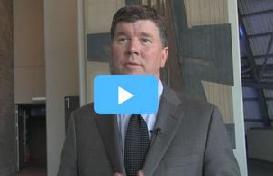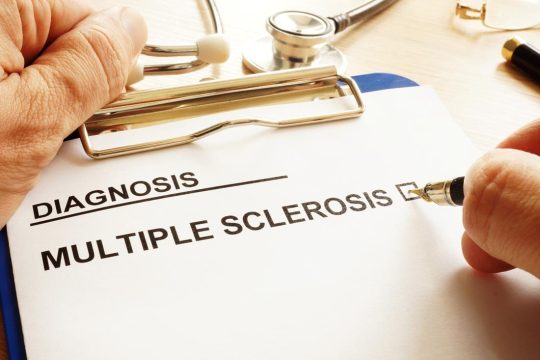Advertisment
ISH/BSH 2016: Professor Keith Stewart (Mayo Clinic, USA) discusses his presentation from the presidential session on genomic sequencing in this video. Also included article entitled ‘Genome-guided therapy in multiple myeloma’

Genome-guided therapy in multiple myeloma
by Maria Dalby
Professor Keith Stewart, Mayo Clinic, Scottsdale, AZ, USA
Genomic sequencing of newly-diagnosed and refractory MM patients shows that combination therapy is required to target subclones with variable drug sensitivity. Minor drug resistant clones may turn out to be lethal and the therapeutic goal should be to achieve a complete response. In a presidential session at this year’s BSH/ISH meeting, Professor Keith Stewart from the Mayo Clinic in Arizona outlines how mutation panels can be used clinically to determine the clonal depth of mutations and to what extent mutations are actionable, as well as establish the prognosis and risk of drug resistance.
Survival outcomes have improved dramatically in MM in recent years – data from the Mayo Clinic shows that overall survival in MM has increased from a median of less than 2 years in the 1960s, to around 8-10 years in the last 10 years.1, 2 However, challenges remain in the fact that around 25% of patients still only survive for less than 3 years after diagnosis, and even in patients who survive for a prolonged period of time relapse seems inevitable. The key to this variability lies in the genetic basis of MM. The most common genetic form of MM, hyperdiploid with t(11; 14) and t(6; 14) translocations, is found in around 60% of patients and has a median survival rate of around 10 years with a proportion of patients actually being cured. In contrast, the most high-risk genetic form of MM is found in 20% of patients and is characterised by the 17p deletion and t(14; 16) and t(14; 20) translocations – these patients have a median survival of only 3 years.3 Sequencing of over 1,000 whole genome/exome sequences of MM patients has shown that mutations in MM are found in a limited set of genes.4-9 Professor Stewart and colleagues at the Mayo Clinic have designed the Myeloma Mutation Panel (M3P) as a more clinically feasible alternative to full genome sequencing. The M3P panel includes the FAM46C, TP53 and DIS3 genes which are considered recurrently mutated in MM and the RAS, BRAF and IDH1 genes which are actionable; it also includes genes that control oncogenic pathways such as MAPK, cereblon and MYC, and genes associated with resistance to IMiDs, proteasome inhibitors and glucocorticosteroids.10
In newly-diagnosed, untreated MM, M3P results from more than 500 tumour and germline samples show that 83% of patients had a mutation with a mean of 2 mutations per patient.10-12 Actionable mutations in BRAF, IDH, AKT and FGFR3 genes were found in 10% of patients, indicating that these patients have a precision-medicine therapeutic option already at diagnosis.
The CoMMpass study is run by the Multiple Myeloma Research Foundation in USA with the aim of sequencing 1,000 MM patients at the time of diagnosis and following the patients prospectively through the course of the disease and treatment. Clinical parameters will be collected from each patient at 3-month intervals for a minimum of 8 years; assays conducted include flow cytometry, molecular profiling of the whole genome, exome and transcriptome, circulating multiple myeloma cells (CMMC) and next-generation sequencing (NGS) for minimal residual disease (MRD). Enrolment in the CoMMpass project has now been completed with more than 1,000 patients included at more than 90 sites worldwide. The initial results provide insights into the real-life experience of MM patients: for example, only 40% of patients have had a transplant, and whilst first-line therapy is associated with a 94% response, this rapidly declines at second- and third-line therapy. BRAF mutations were found in 36% of patients at diagnosis and in 88.8% of relapsed patients, highlighting the logical rationale for combination chemotherapy and continuous suppressive therapy beyond first-line therapy.
References
- Kumar SK, Rajkumar SV, Dispenzieri A, et al. Improved survival in multiple myeloma and the impact of novel therapies. Blood 2008;111:2516-20.
- Kumar SK, Dispenzieri A, Lacy MQ, et al. Continued improvement in survival in multiple myeloma: changes in early mortality and outcomes in older patients. Leukemia 2014;28:1122-8.
- Mikhael JR, Dingli D, Roy V, et al. Management of newly diagnosed symptomatic multiple myeloma: updated Mayo Stratification of Myeloma and Risk-Adapted Therapy (mSMART) consensus guidelines 2013. Mayo Clin Proc 2013;88:360-76.
- Chapman MA, Lawrence MS, Keats JJ, et al. Initial genome sequencing and analysis of multiple myeloma. Nature 2011;471:467-72.
- Bolli N, Avet-Loiseau H, Wedge DC, et al. Heterogeneity of genomic evolution and mutational profiles in multiple myeloma. Nat Commun 2014;5.
- Lohr JG, Stojanov P, Carter SL, et al. Widespread genetic heterogeneity in multiple myeloma: implications for targeted therapy. Cancer Cell 2014;25:91-101.
- Walker BA, Boyle EM, Wardell CP, et al. Mutational Spectrum, Copy Number Changes, and Outcome: Results of a Sequencing Study of Patients With Newly Diagnosed Myeloma. J Clin Oncol 2015.
- Lonial S, Yellapantula VD, Liang W, et al. Interim Analysis of the Mmrf Commpass Trial: Identification of Novel Rearrangements Potentially Associated with Disease Initiation and Progression. Blood 2014;124:722-722.
- Keats JJ, Chesi M, Egan JB, et al. Clonal competition with alternating dominance in multiple myeloma. Blood 2012;120:1067-76.
- Kortuem KM, Braggio E, Sonneveld P, et al. Targeted Genomic Mutation Panel (M3 P) Results from 504 Multiple Myeloma (MM) Patients. Blood 2015;126:1795-1795.
- Kortuem KM, Braggio E, Bruins L, et al. Panel sequencing for clinically oriented variant screening and copy number detection in 142 untreated multiple myeloma patients. Blood Cancer J 2016;6:e397.
- Kortum KM, Langer C, Monge J, et al. Targeted sequencing using a 47 gene multiple myeloma mutation panel (M(3) P) in -17p high risk disease. Br J Haematol 2015;168:507-10.





